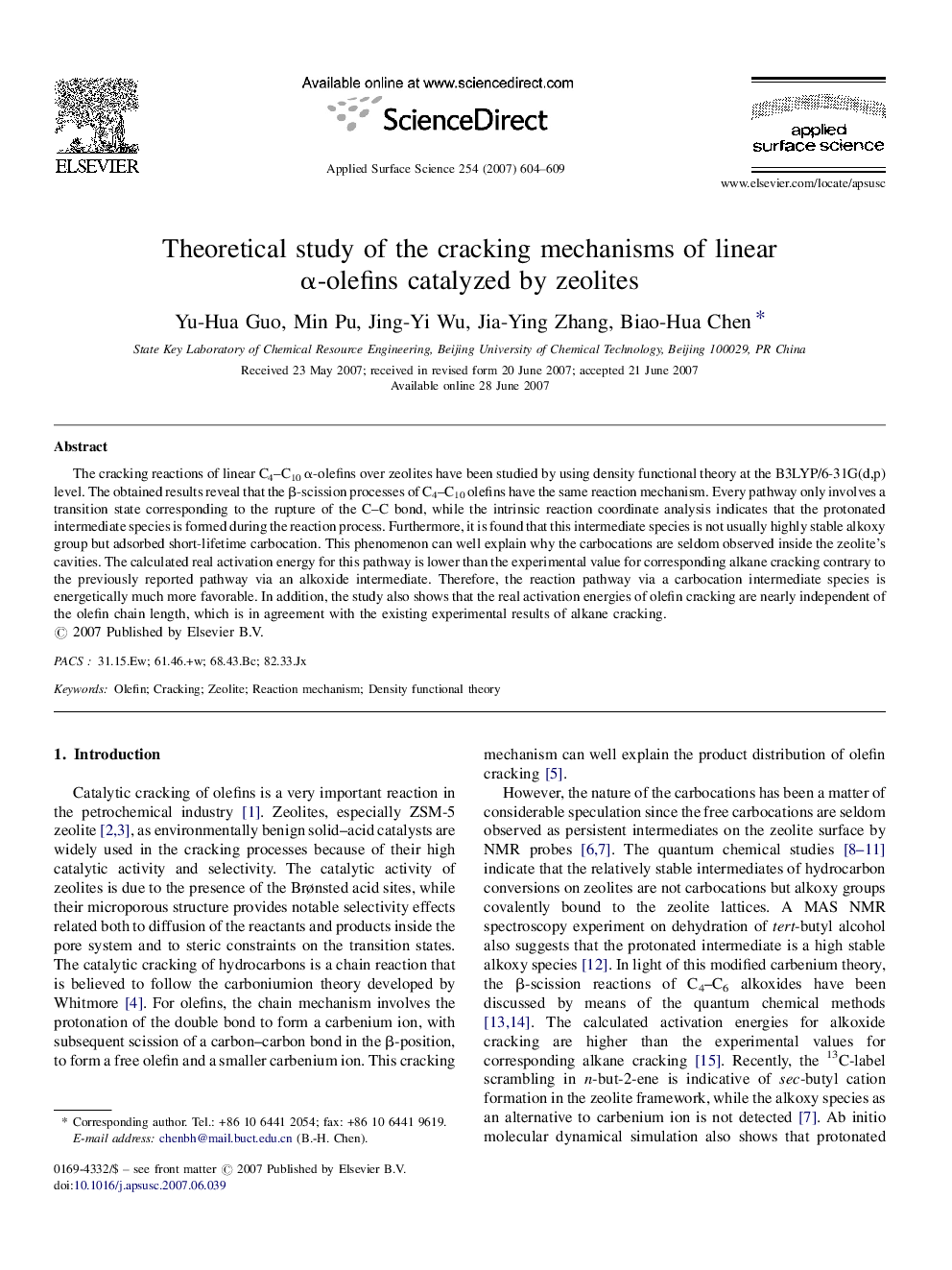| Article ID | Journal | Published Year | Pages | File Type |
|---|---|---|---|---|
| 5366443 | Applied Surface Science | 2007 | 6 Pages |
Abstract
The cracking reactions of linear C4-C10 α-olefins over zeolites have been studied by using density functional theory at the B3LYP/6-31G(d,p) level. The obtained results reveal that the β-scission processes of C4-C10 olefins have the same reaction mechanism. Every pathway only involves a transition state corresponding to the rupture of the C-C bond, while the intrinsic reaction coordinate analysis indicates that the protonated intermediate species is formed during the reaction process. Furthermore, it is found that this intermediate species is not usually highly stable alkoxy group but adsorbed short-lifetime carbocation. This phenomenon can well explain why the carbocations are seldom observed inside the zeolite's cavities. The calculated real activation energy for this pathway is lower than the experimental value for corresponding alkane cracking contrary to the previously reported pathway via an alkoxide intermediate. Therefore, the reaction pathway via a carbocation intermediate species is energetically much more favorable. In addition, the study also shows that the real activation energies of olefin cracking are nearly independent of the olefin chain length, which is in agreement with the existing experimental results of alkane cracking.
Related Topics
Physical Sciences and Engineering
Chemistry
Physical and Theoretical Chemistry
Authors
Yu-Hua Guo, Min Pu, Jing-Yi Wu, Jia-Ying Zhang, Biao-Hua Chen,
